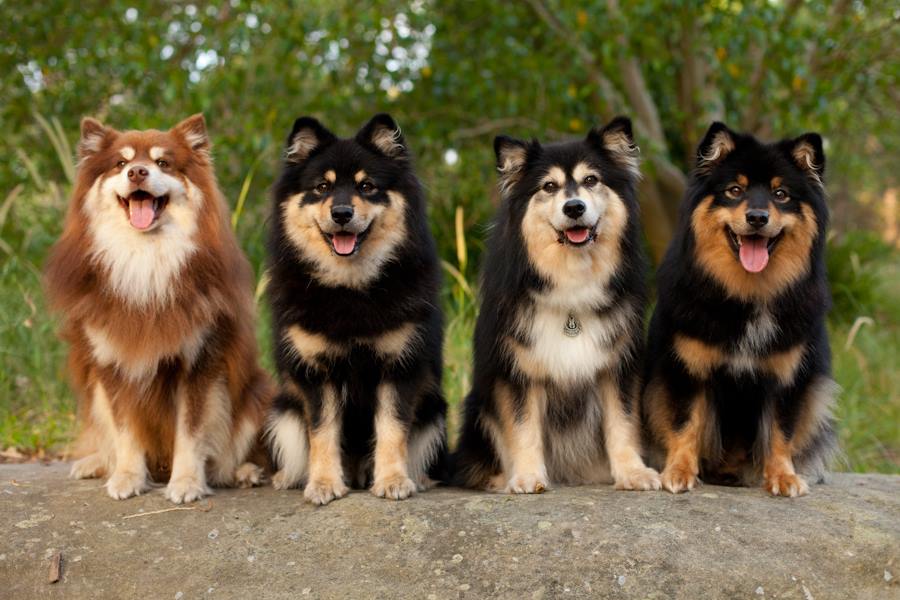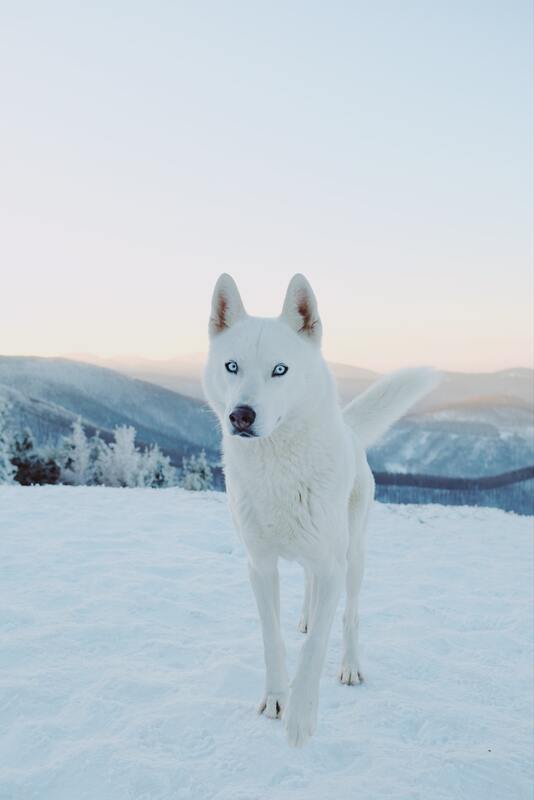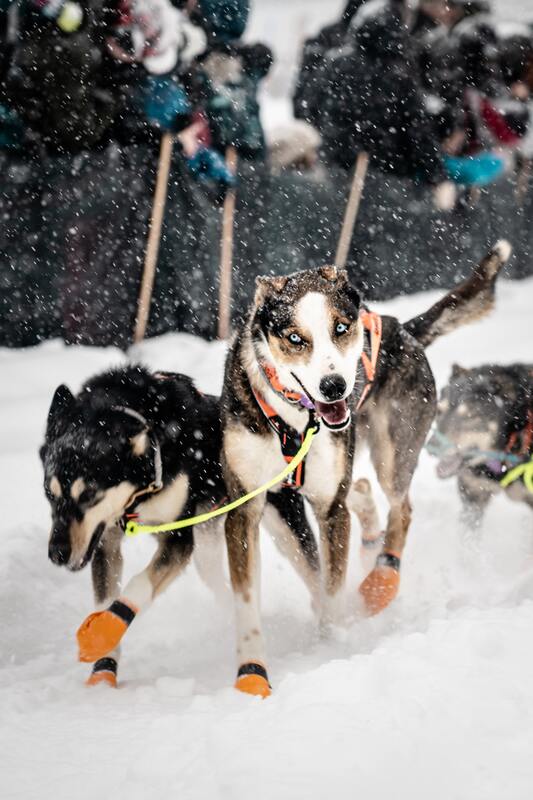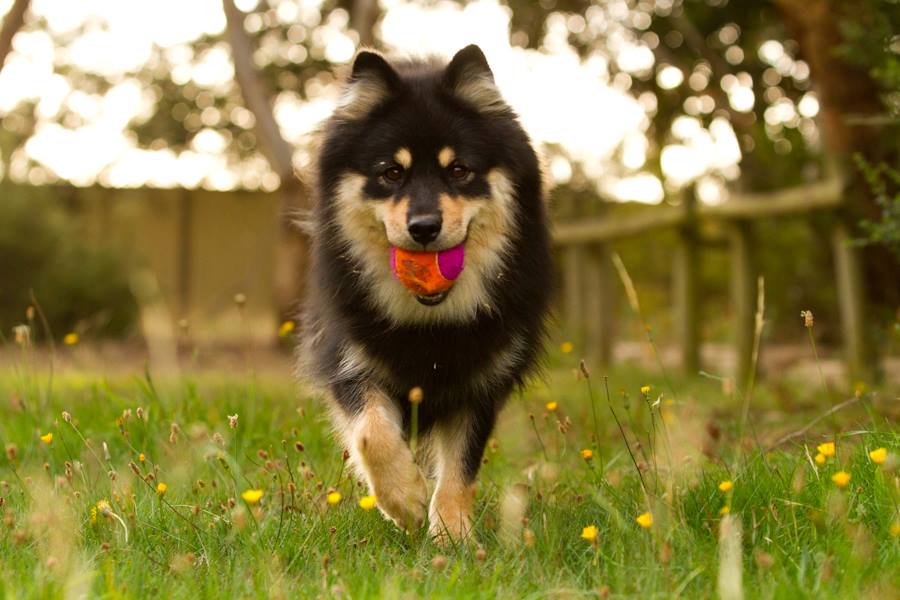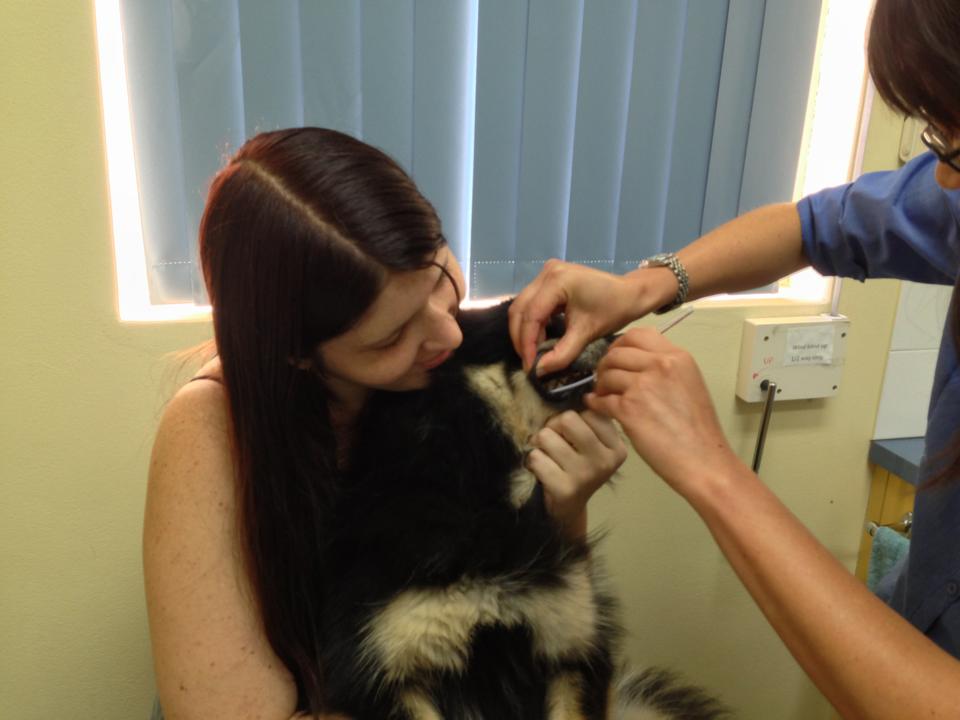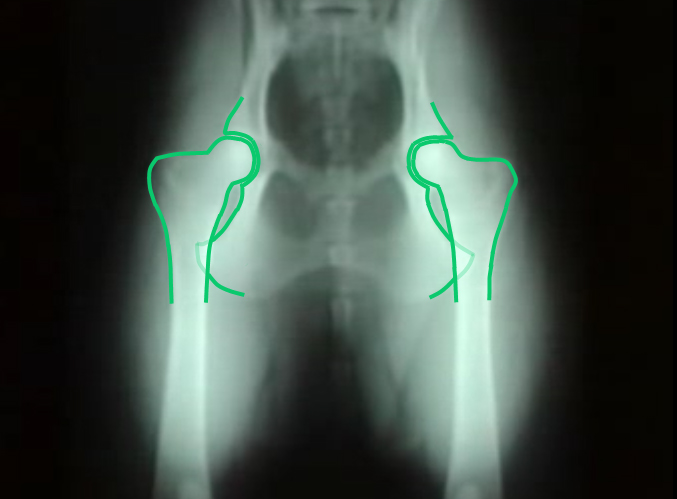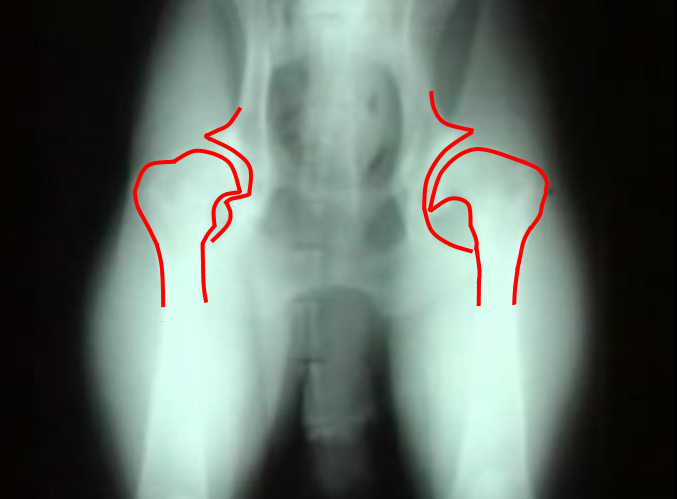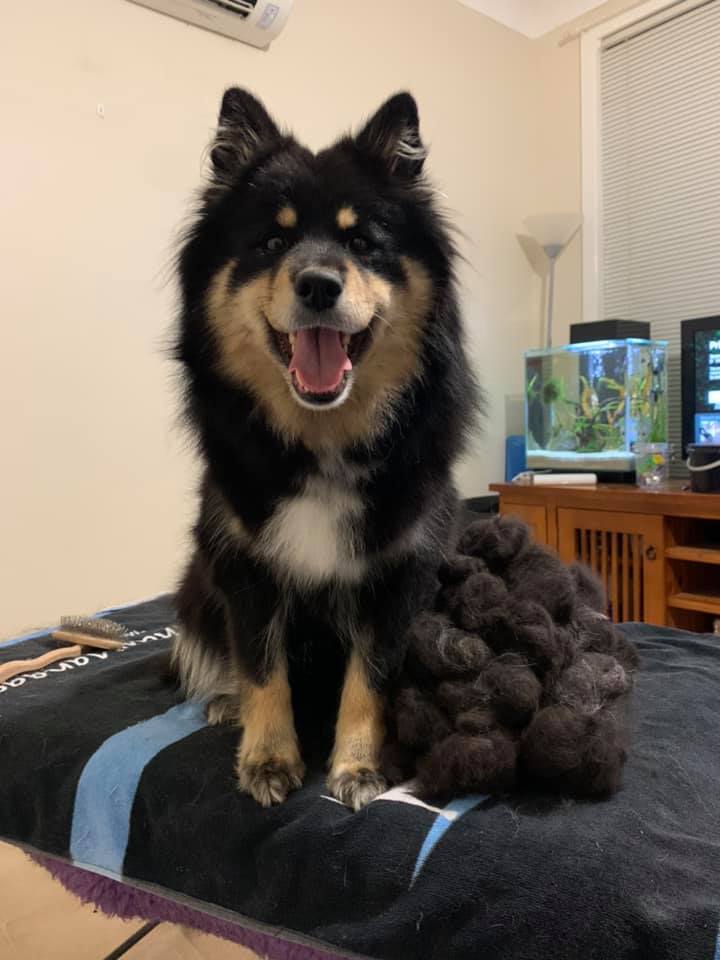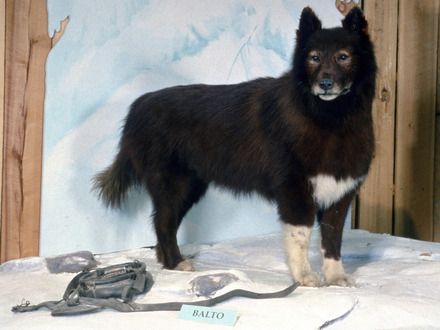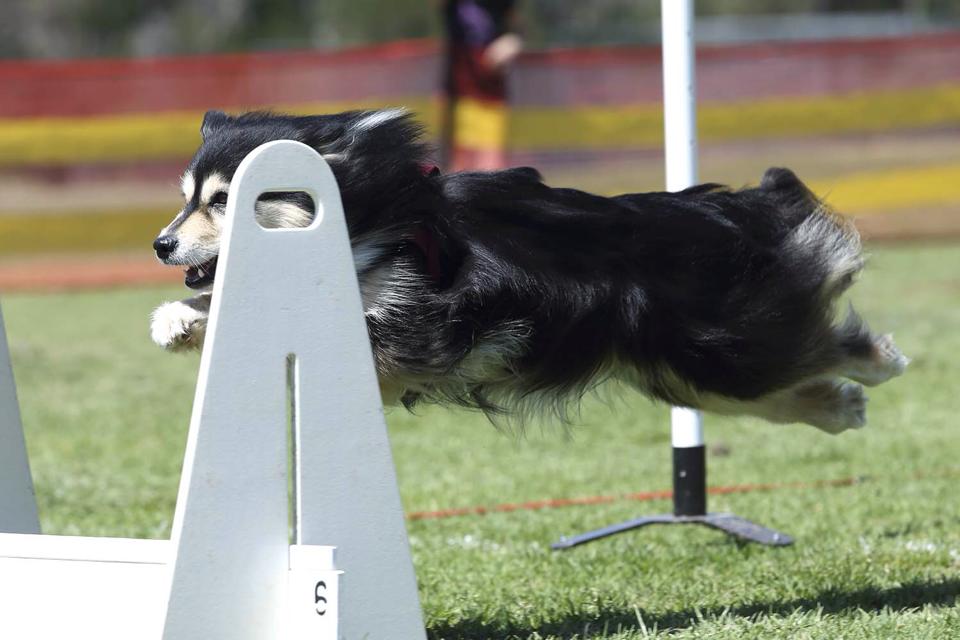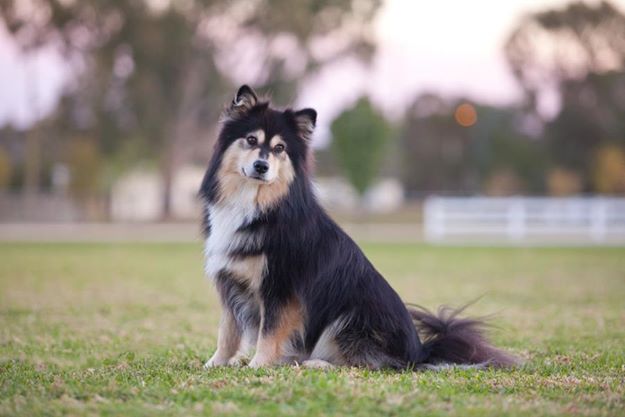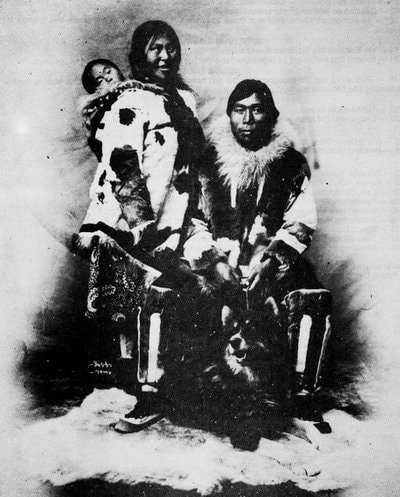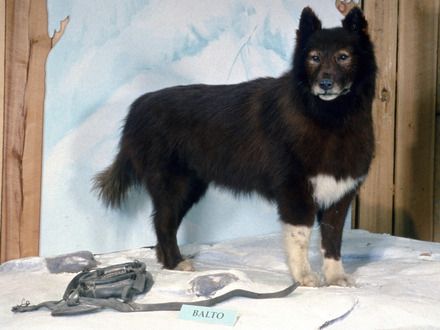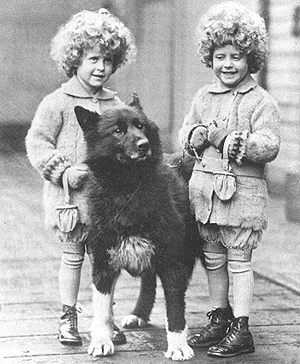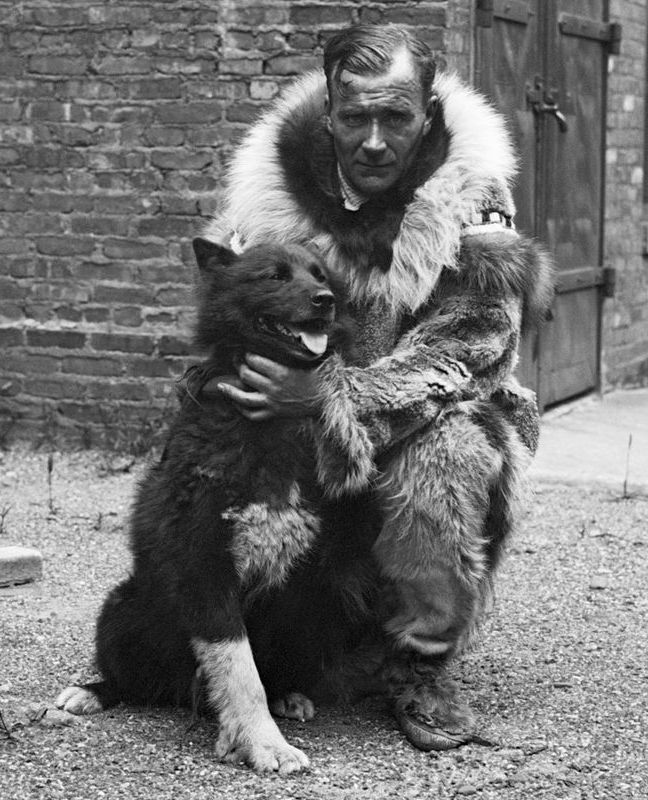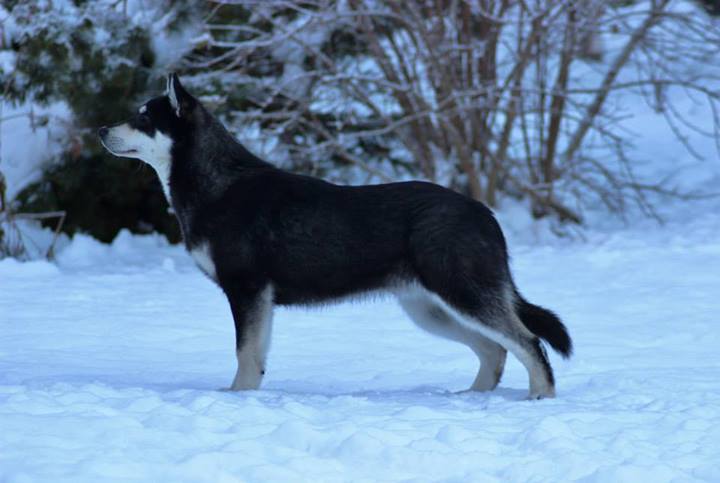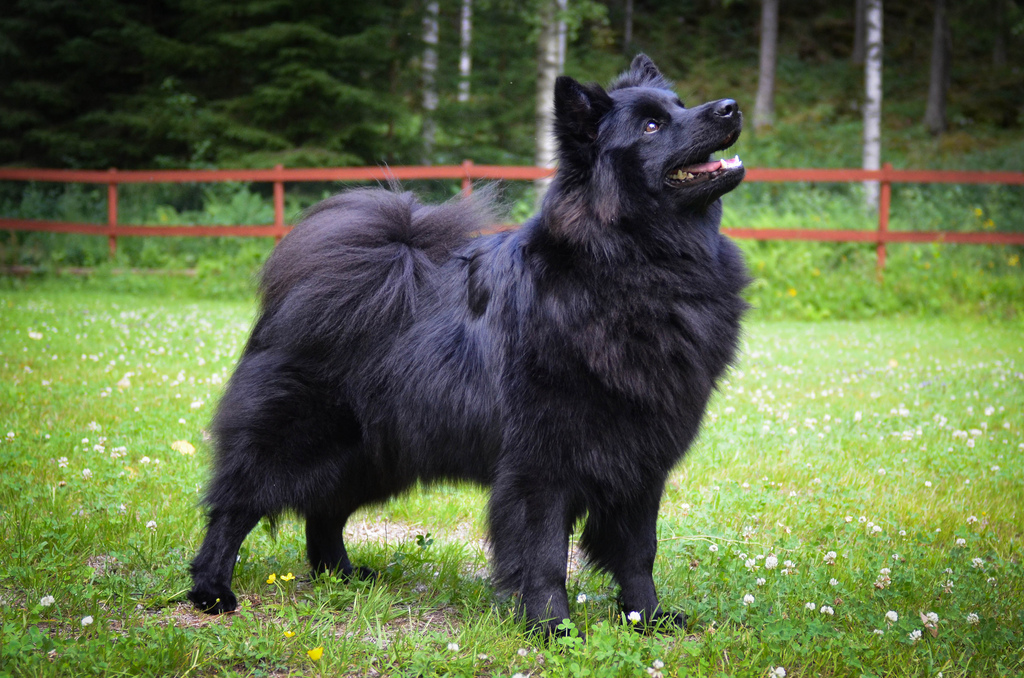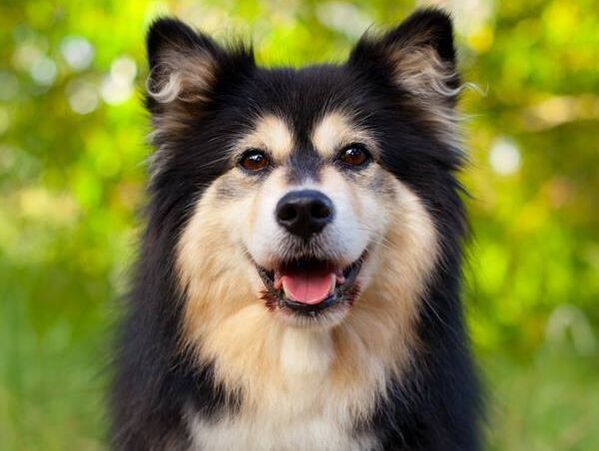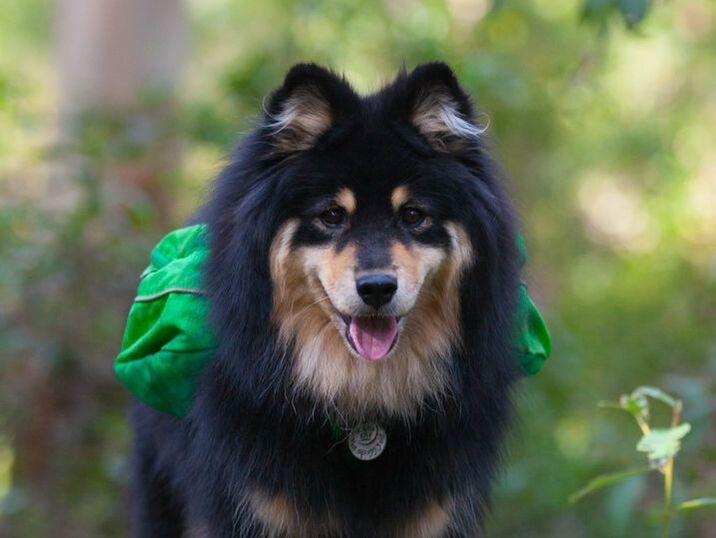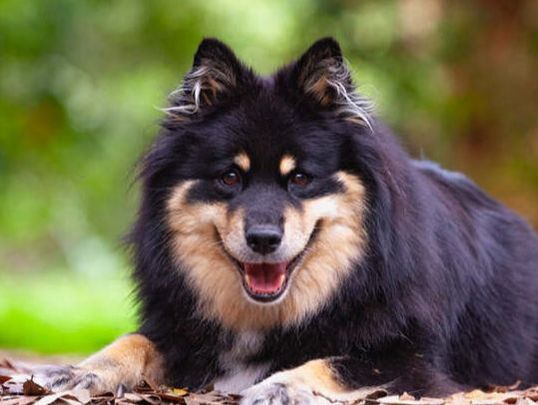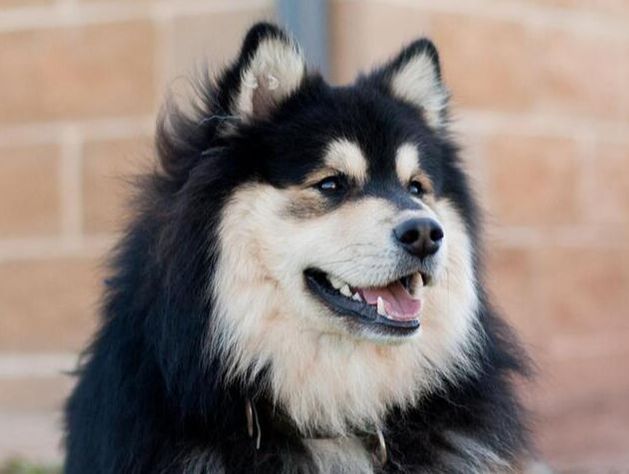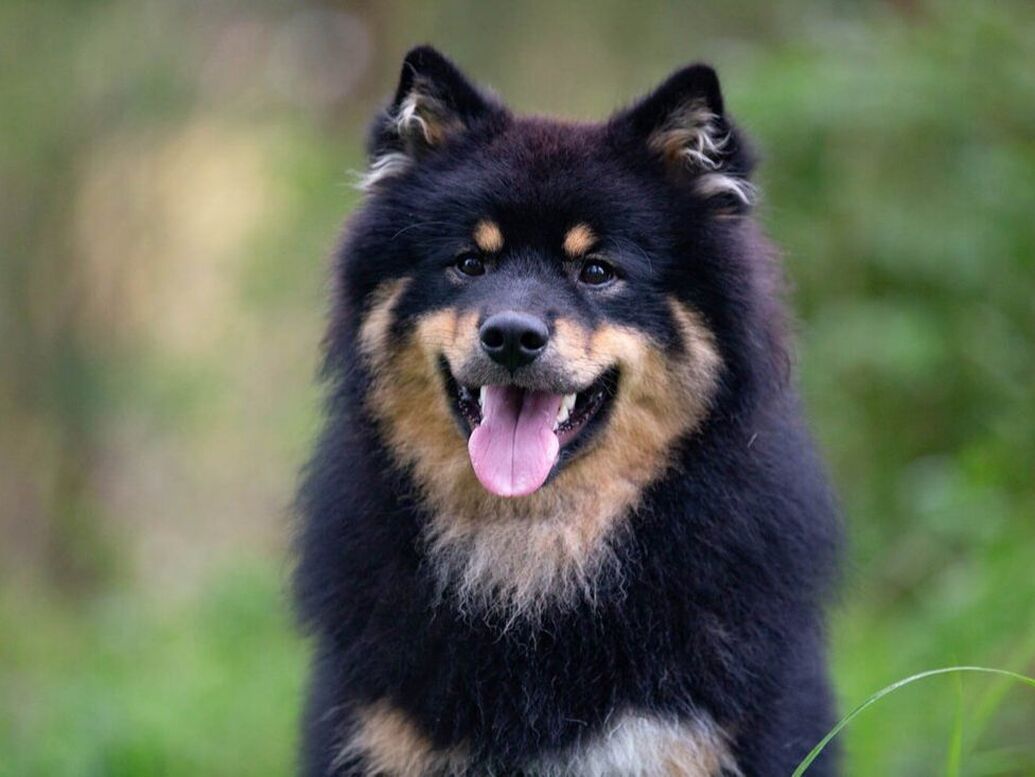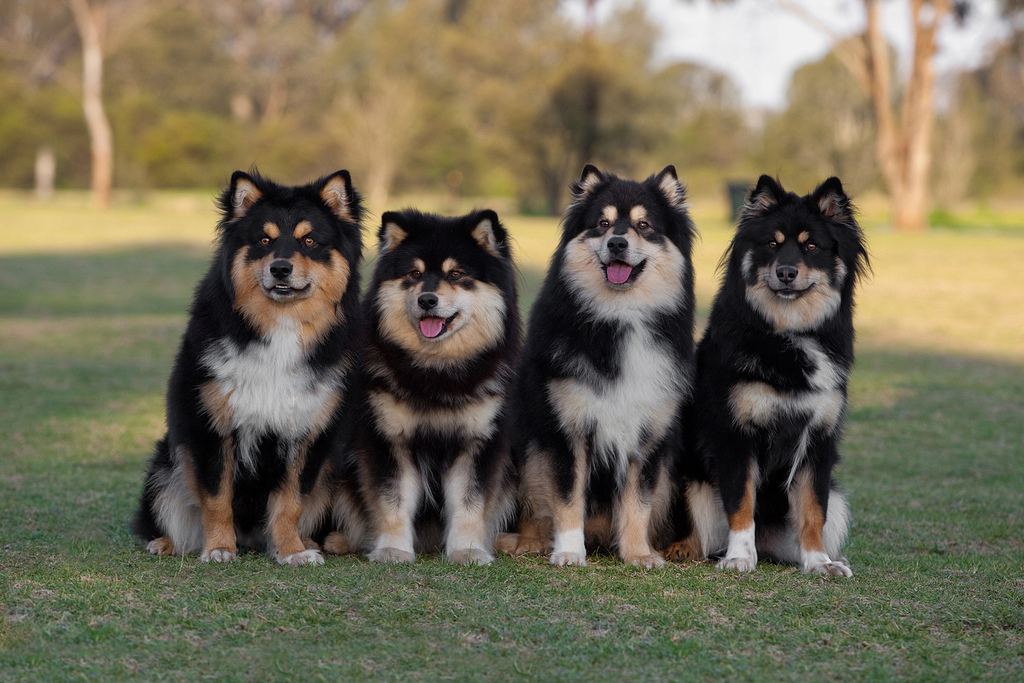I'm a Suomenlapinkoira, a Finnish Lapponian Dog, a Finnish Lapphund or just a "Lappie".
About the breedThere are very few breeds who can classify themselves as both "old" and "new" but the Finnish Lapphund is one of them. Bred by the nomadic Sami people of Lapland which encompasses the northern parts of Sweden, Finland, Norway and the Kola Peninsula of Russia, the Lappish dogs (ancestors of the Finnish Lapphund) have been used as hunting dogs, watch dogs and reindeer herders for centuries.
Though the breed has since been largely replaced in their original work by snow-mobiles, they have gained popularity as a companion, utility and sport dog in Finland, where there are more than 1000 puppies registered every year. The breed is still relatively new in Australia, with the first Lappie arriving in 1995. Sulyka Sisko or "Finn" was the first of three Lappie imports brought in by Brambleway Kennels, with Staalon Kolumbus "Kolumbus" and Lecibsin Heissulivei "Lily" following in 1997 and 2000 respectively. The first litter, between Kolumbus and Lily was born in 2001. Since then, the breed has exploded in popularity due to its good looks and sweet temperament. There are now more than 2000 Lappies across Australia and roughly 30 breeders. Thankfully the rise of reproductive technologies has mean that more and more lines have been able to be imported into Australia every year in the form of live dogs and AI opportunities, so having many imported dogs in pedigrees is common and genetic issues are relatively rare. |
Finnish Lapphunds as pets
Finnish Lapphunds make great companion dogs, and do best when allowed to be inside as part of the family. They tend to be really good with children, even if they are have not been raised with them, however they can be boisterous particularly when they're young and silly so they should never be left unsupervised with young children.
Finnish Lapphunds are very intelligent, people focused dogs which makes them quite easy to train, however they are also a spitz breed so do have a tendency to be a little more independent than a lot of other working breeds.
They are more than capable of learning basic pet obedience, and while they can be reactive to other dogs, human aggression should never be tolerated in the breed.
While they are an excellent family pet, most lappies do have a tendency to bark. A lot. As they were bred to also act as a watch dog to alert the Sami to approaching people or animals, this trait has been bred into them over thousands of years so it is not something that they can be easily trained out of. Some lines bark more than others but most lappie owners manage the barking rather than actually training the dog not to bark.
Lappies tend to be cooperative and enthusiastic learners, however reliability can be a problem and it can be difficult to motivate them to continue doing the same thing over and over again. They excel at cross training (working on several different behaviours or sports at the same time), and are very capable of competing in a wide range of sports, however their body type, proportions, heat sensitivity and temperament can be an issue when it comes to competing in the top levels of ANKC dog sports.
Lappies are a working dog so they do require daily exercise. Generally, we recommend 30 minutes-1hour of walking or free running in an open space each day to keep your lappie in top condition and to give them the mental stimulation they need to be calm and quiet at home.
Lappies are heat affected so they should not be exercised in warm temperatures, but may enjoy swimming or trips to the beach in lieu of a walk on a hot day.
Lappies in Australia tend to have less coat than their northern ancestors simply because of the warmer weather here but that does not necessarily mean less grooming is required. Finnish Lapphund owners should set aside roughly an hour a week for grooming, more if the dog is “blowing coat”.
Blowing coat refers to the time when a dog will lose large amounts of their undercoat in a small amount of time. Often dogs will go from being in full coat, to having very little undercoat in the space of a month or less. During this time, owners must groom their dogs much more often to prevent the dead coat from getting caught in the rest of the coat and matting.
We use a technique called line combing to groom our Finnish Lapphunds and our every day grooming kit for the breed includes a comb, pin brush and grooming spray.
Finnish Lapphunds are very intelligent, people focused dogs which makes them quite easy to train, however they are also a spitz breed so do have a tendency to be a little more independent than a lot of other working breeds.
They are more than capable of learning basic pet obedience, and while they can be reactive to other dogs, human aggression should never be tolerated in the breed.
While they are an excellent family pet, most lappies do have a tendency to bark. A lot. As they were bred to also act as a watch dog to alert the Sami to approaching people or animals, this trait has been bred into them over thousands of years so it is not something that they can be easily trained out of. Some lines bark more than others but most lappie owners manage the barking rather than actually training the dog not to bark.
Lappies tend to be cooperative and enthusiastic learners, however reliability can be a problem and it can be difficult to motivate them to continue doing the same thing over and over again. They excel at cross training (working on several different behaviours or sports at the same time), and are very capable of competing in a wide range of sports, however their body type, proportions, heat sensitivity and temperament can be an issue when it comes to competing in the top levels of ANKC dog sports.
Lappies are a working dog so they do require daily exercise. Generally, we recommend 30 minutes-1hour of walking or free running in an open space each day to keep your lappie in top condition and to give them the mental stimulation they need to be calm and quiet at home.
Lappies are heat affected so they should not be exercised in warm temperatures, but may enjoy swimming or trips to the beach in lieu of a walk on a hot day.
Lappies in Australia tend to have less coat than their northern ancestors simply because of the warmer weather here but that does not necessarily mean less grooming is required. Finnish Lapphund owners should set aside roughly an hour a week for grooming, more if the dog is “blowing coat”.
Blowing coat refers to the time when a dog will lose large amounts of their undercoat in a small amount of time. Often dogs will go from being in full coat, to having very little undercoat in the space of a month or less. During this time, owners must groom their dogs much more often to prevent the dead coat from getting caught in the rest of the coat and matting.
We use a technique called line combing to groom our Finnish Lapphunds and our every day grooming kit for the breed includes a comb, pin brush and grooming spray.
Health ConcernsWhile the Finnish Lapphunds is generally a healthy breed, they do have the occasional health issue that comes up. Good breeders monitor their lines and test their breeding stock for known health issues but as there are no real pass or fail marks in health testing, what the breeder does with the data is equally as important.
Basic health testing for breeding dogs includes: - hip and elbow scoring (to test for hip and elbow dysplasia), - an ACES eye exam (for a myriad of eye conditions) - genetic testing for PRCD-PRA, GSD-II or "Pompes" disease and Canine Degenerative Myelopathy, though these may not be done if both parents have tested clear of the condition. Other tests may include an echocardiogram (an ultrasound of the heart), a gonioscopy (a test to check the drainage angle of the eye) and a genetic profile. |
GroomingAs a general rule, Lappies in Australia tend to have less coat than their northern ancestors due to our warmer weather. They don't need bathing often, as they don't tend to smell "doggie" like other breeds can and even if they get wet and muddy, the dirt will generally fall out as they dry. Baths are usually reserved for times when they are blowing coat or have rolled in something particularly gross.
Pet parents should set aside roughly an hour a week for normal grooming and nail maintenance but more time will be needed if your Lappie is doing a seasonal shed (aka "blowing coat"). During this time will lose all their undercoat in the space of a month or so and will need grooming much more often to prevent the dead hair from getting caught up and matting. Generally boys will blow coat once a year, and girls will blow coat twice in line with their seasons if kept entire. If desexed, they tend to grow bigger, fuller coats and do a major shed once a year. |
ExerciseLappies are a working dog so they do require daily exercise. Generally, we recommend 30 minutes-1hour of walking or free running in an open space each day to keep your lappie in top condition and to give them the mental stimulation they need to be calm and quiet at home.
Lappies are heat affected so they should not be exercised in warm temperatures, but may enjoy swimming or trips to the beach in lieu of a walk on a hot day. |
TrainingFinnish Lapphunds are very intelligent, people focused dogs which makes them quite easy to train, however they are also a spitz breed so do have a tendency to be a little more independent than a lot of other working breeds.
They are more than capable of learning basic pet obedience, and while they can be reactive to other dogs, human aggression should never be tolerated in the breed. Lappies tend to be cooperative and enthusiastic learners, however reliability can be a problem and it can be difficult to motivate them to continue doing the same thing over and over again. They excel at cross training (working on several different behaviours or sports at the same time), and are very capable of competing in a wide range of sports, however their body type, proportions, heat sensitivity and temperament can be an issue when it comes to competing in the top levels of ANKC dog sports. |
The most commonly asked questions:
|
Height at the shoulder: 46-51cm for the boys, 41-47cm for the girls.
Weight: 12-22kgs depending on build. Grooming requirements: about 1 hour a week. Do they bark: Yes. A lot. Suitable for apartments? Not in most cases. How tall do they get? Males should be 46-51cm and females 41-47cm tall at the shoulder.
How much do they weigh? 12-22kgs Do they bark? Yes. A lot. Are they suitable for apartments: Not in most cases. What are their grooming requirements: 30min-1hour per week. |
Are they good with cats and small pets? This depends on the individual.
How much exercise do they need? 30 minutes-1 hour per day Are they good off-leash? They can be with training. How much do they cost? $3500-4500 |
Driven to the brink of extinction
Saving the BreedIn the 1940s, as the numbers of Finnish Lapphunds decreased, the Finnish people realised they needed to save their beautiful breed, and dogs belonging to the Sami people were bought, with the intention of establishing a breeding program. This led to the writing of a breed standard, which was adopted by the Finnish Kennel Club in 1945, under the breed name of "Lapponian Shepherd Dog". The original breed standard included both longer and shorter coated dogs under the same breed and it has been said that dogs of both coat types could be born in the same litters.
In 1967, the breeds were separated into long and short coats and given separate standards. The "Lapinkoira", or Lapphund and the "Lapinporokoira" or Lapponian Herder were recognised, finally splitting into the three different breeds we have today to - the separate the Finnish and Swedish Lapphunds. In 1996, the Finnish Lapphund standard in Finland was revised and an English translation was accepted by the Federation Cynologique Internationale (FCI) in 1999. |
The Lappie Rainbow
|
Part of the appeal of the Finnish Lapphund is the vast array of colours they come in, the most common of which is Black and Tan. By understanding basic colour genetics, breeders should be able to give you a good idea of the colours they are expecting in a litter, though with recessive genes being able to be passed down without physically manifesting in the dog's appearance, some of the colours may show up unexpectedly.
|
One breed becomes three
The Lappish BreedsWhile
The Suomenlapinkoira, or "Finnish Lapphund", the Lapinporokoira or "Lapponian Herder" and the Ruotsinlapinkoira or the "Swedish Lapphund". While the Finnish and Swedish Lapphunds are geared towards the fast, frenzied herding of a galloping breed, the Lapponian Herder is built to cover ground quickly at a trot, to drive the herd forward. Swedes come in much fewer colours than the Finns, preferring solid colouring. but the Finnish and Swedish Lapphunds are rarely used by the Sami for their original purpose anymore, with the Lapponian Herder more tailored to their needs. |
|
|
There are very few breeds who can classify themselves as both "old" and "new" but the Finnish Lapphund is one of them. Bred by the nomadic Sami people of Lapland which encompasses the northern parts of Sweden, Finland, Norway and the Kola Peninsula of Russia, the Lappish dogs (ancestors of the Finnish Lapphund) have been used as guard dogs and reindeer herders for centuries.
As the lifestyle of the Sami people and their needs changed, so too did their dogs, eventually splitting into three separate but related breeds with different purposes. The Suomenlapinkoira, or "Finnish Lapphund", the Lapinporokoira or "Lapponian Herder" and the Ruotsinlapinkoira or the "Swedish Lapphund". While the Finnish and Swedish Lapphunds are geared towards the fast, frenzied herding of a galloping breed, the Lapponian Herder is built to cover ground quickly at a trot, to drive the herd forward.
As the Sami adopted a less nomadic lifestyle, the dogs became less and less necessary in the management of reindeer, particularly after the Sami adopted the use of snowmobiles. The breed's strong herding instinct remains but the Finnish and Swedish Lapphunds are rarely used by the Sami for their original purpose anymore, with the Lapponian Herder more tailored to their needs.
In the 1940s, as the numbers of Finnish Lapphunds decreased, the Finnish people realised they needed to save their beautiful breed, and dogs belonging to the Sami people were bought, with the intention of establishing a breeding program. This led to the writing of a breed standard, which was adopted by the Finnish Kennel Club in 1945, under the breed name of "Lapponian Shepherd Dog". The original breed standard included both longer and shorter coated dogs under the same breed and it has been said that dogs of both coat types could be born in the same litters. In 1967, the breeds were separated into long and short coats and given separate standards. The "Lapinkoira", or Lapphund and the "Lapinporokoira" or Lapponian Herder were recognised, finally splitting into the three different breeds we have today to separate the Finnish and Swedish Lapphunds. In 1996, the Finnish Lapphund standard in Finland was revised and an English translation was accepted by the Federation Cynologique Internationale (FCI) in 1999. Though the breed is popular in Finland with over 1000 puppies registered a year, it is still relatively new in Australia, with the first Lappie arriving in 1995. Sulyka Sisko or "Finn" was the first of three Lappie imports by Brambleway Kennels, with Staalon Kolumbus "Kolumbus" and Lecibsin Heissulivei "Lily" following in 1997 and 2000 respectively. The first litter, between Kolumbus and Lily was born in 2001. Since then, Lappie numbers have increased with more and more dogs imported into Australia, and many litters being born. Australia's total has now risen to over 1200 Lappies registered with more on the way!
| |||||||||||||||||||||||||||||
|
NSW Breeder Identification Number: B000685661 | Victoria Source Number: EE102260
Dogs NSW Member Number: 2100088743 |
© Pawformance 2023
|

